
... playing New Orleans, Dixieland & Traditional
Jazz
Home
News
Musicians
Gigs
CD's
Reviews
Jazz Legends
Links
Contact
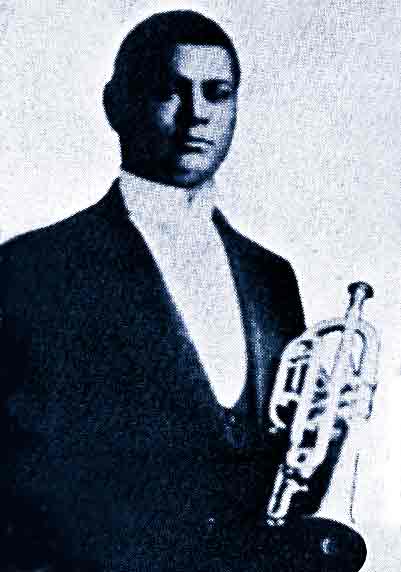
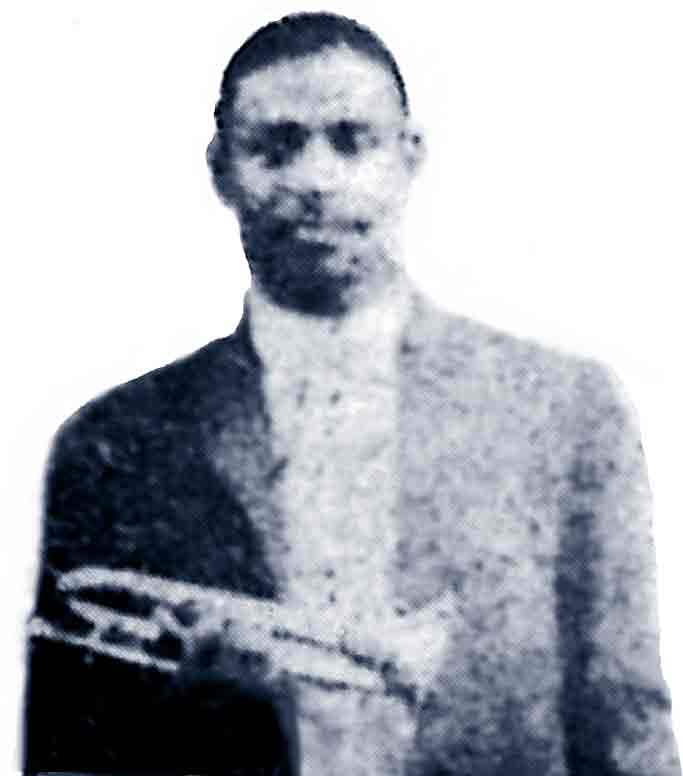
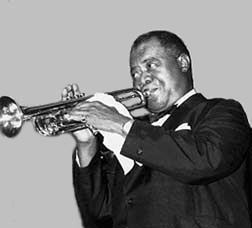
Jazz Legends - their life & music
SIDNEY BECHET
JELLY ROLL MORTON
BUBBER MILEY
GEORGE MITCHELL
DUKE ELLINGTON
KING OLIVER
JOHNNY DODDS
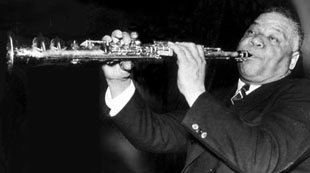 SIDNEY BECHET : New Orleans Jazzman.
SIDNEY BECHET : New Orleans Jazzman. Imagine the excitement of a six-year-old, when Freddie Keppard's ragtime band, considered one of the very best in New Orleans, comes to your house to play at a surprise birthday party for your older brother. George Baquet their clarinetist is delayed and young Sidney gets out his brother's clarinet and in a spare room plays along with the band. Of course he gets carried away, plays too loud and is discovered by the musicians who insist he join them. When Baquet finally shows up he is so impressed with this child prodigy that he offers Sidney clarinet lessons. And thus begins the musical career of New Orleans' jazz legend, Sidney Bechet. Sidney was born on May 14, 1987 into a very musical New Orleans Creole family living on St Antoine St.; he was the youngest of seven children. Grandfather Omar was a great natural musician who danced, sang and played drums in the fabled Congo Square (where Buddy Bolden made jazz history). Sidney's father, a shoemaker by trade, also had a love of music, sang and on occasion played flute and trumpet. Sidney never had much use for school, nor even for formal music lessons, and his preferred education was roaming New Orleans, listening to the great ragtime bands of the city and second-lining the marching bands. One delightful story is of Bechet hanging around Piron's barbershop, which out back was crammed full of all kinds of musical instruments. The young Bechet would pick up a new instrument and say, "Let's see if I can make this sing." It says a lot about Bechet's approach to music and the full-bodied "singing" tone that became his signature. Early on Sidney played with his brothers' Silver Bell band, but by the age of 12 he was playing with Buddy Petit and the Young Olympians and already borrowing long pants to sit in with and sub with some of New Orleans' finest bands. One of these was the Eagle Band, Buddy Bolden's old group led by trumpet player Bunk Johnson. Bunk asked Bechet to join the Eagle band around 1911, replacing the great Lorenzo Tio. Sidney's mother required Bunk to collect the young teenager for the frequent evening gigs they played and then return him home afterwards. Getting Sidney back home was no easy task - he was always off down an alley "chasin' them little women." The Eagle Band's music was hot with a rough edge - they played rags and they could really play the blues. Later Sidney was to remark that "the blues is the whole foundation of jazz - if you can't play the blues, feel the blues, you can't play jazz." It is amazing to realize that Bechet, still in his early teens was acknowledged to be one of the best jazz clarinetists in New Orleans. Bechet's talents extended to the cornet, which he played in the New Orleans marching bands, along side of Bunk and Joe Oliver. Many could not believe that the cornet player and the clarinet player were one and the same. The fall of 1917 found Bechet in Chicago playing in a hot group with cornetist Freddie Keppard. Soon after, Bechet took a band into Chicago's Dreamland and sent back to New Orleans for the great cornet player Joe Oliver, who in turn would bring Louis Armstrong to the windy city. In 1919 Bechet made the first of many tours of Europe and on this trip he began to play soprano sax, the reed instrument he made his own. The first of Bechet's many recordings was cut in 1923 with piano player Clarence Williams' Blue Five, producing Wild Cat Blues and Kansas City Man Blues. There isn't space to detail the full career of the mature Bechet, but one can briefly mention a short spell with Duke Ellington in the twenties, the 1940 recordings with Louis Armstrong which were part of the Trad Revival, and his later work in France which fueled the European Trad revival. Bechet is renowned for his wonderful melodic jazz compositions. Petite Fleur, one of his later tunes, was hugely popular with the general public as well as with jazz audiences. A tango beat and a simple haunting melody of great beauty, are its principle features. Various tours of Europe led Bechet to eventually settle in France. He died in Paris in 1959, leaving behind a spectacular legacy of musical compositions and unique recordings. He also left behind a next generation of musicians to whom he had taught soprano sax, among them Bob Wilbur, Jacques Gauthé and Richard Haddlock. -------- © Mike Slack, 1999 Return to Top By 1923 he was in Chicago and began focussing on music. His early recordings include solo piano works and a session with the New Orleans Rhythm Kings.
Jazz history was made by Morton and his Red Hot Peppers in Chicago in September of 1926 with two great recording sessions setting forth milestones in Classic Jazz. For these record dates he handpicked the best musicians on Chicago's South Side, musicians who were mostly from New Orleans - Omer Simeon, clarinet, Kid Ory, trombone, George Mitchell, trumpet, Johnny St Cyr, banjo,
John Lindsay, bass, and Anrew Hilaire, drums.
Black Bottom Stomp, The Chant, Smoke House Blues, emerged from the first session, followed six days later by Steamboat Stomp, Sidewalk Blues and Dead Man Blues. In December that year, they cut four more sides: Cannon Ball Blues, Grandpa's Spells, Original Jelly Roll Blues and Doctor Jazz.
These music selections were mostly Morton originals, carefully arranged yet with freedom in the solo passages. They had multiple themes, key changes, and solos interspersed with the driving ensemble. It was as if Morton were saying, "This is New Orleans jazz, this is how it should be played."
Mr Jelly held some strong musical views. "Jazz music is to be played sweet, soft, plenty rhythm." That way you can develop crescendos. Solo breaks, featuring an individual for a bar or two, were deemed important. "Without breaks
and without clean breaks and without beautiful ideas in breaks .... you haven't got a jazz band and you can't play jazz." The Red Hot Pepper's recordings are full of breaks: listen to George Mitchell (Little Mitch) on Black Bottom Stomp or on Cannon Ball Blues. The intensity, the drive and the beautiful ideas are all there.
Eventually defeated by the Depression, Swing music and ill health, Morton died in California in 1941, ironically just as the New Orleans revival was getting underway. That year, in San Francisco, Lu Watters and the Yerba Buena Jazz Band reached back to the music of Morton and Armstrong when they decided to revive the roots of jazz. After the breakup of the Yerba Buena band,
Watters' trombone player Turk Murphy led his own band for many years and Turk's love of Morton's music is clear in his choice of recorded and concert material. To this day, the music of Mr. Jelly Lord is featured by the best of traditional jazz bands.
--------- © Mike Slack - Reprinted from NOJCNC News, Nov. 2001.
James "Bubber" Miley was born in Aiken South Carolina on 3 April 1903 and his family moved to New York when he was six. The family was predisposed to encourage his musical development; his father was an amateur guitar player and his sisters Connie, Rose and Murdis performed as a professional vocal group (the South Carolina Trio). Bubber first studied trombone but was soon playing trumpet with the great blues singer Mamie Smith.
Where did he learn his skill with a mute? On the road in Chicago with Mamie's group, Bubber dropped in to listen to Joe King Oliver's band and came under the influence of this New Orleans cornet legend. Nightly, Bubber returned to absorb Oliver's use of mutes and thrill to Oliver's Creole Jazz Band. In this way his playing took on essential elements of the New Orleans tradition, especially the blues. Miley pioneered the use of the straight and the plunger mute in combination, fusing two of Oliver's techniques.
How Bubber was recruited into the Ellington band in 1923 has an ironic link to his eventual departure. When the previous trumpeter left to continue his studies, several sidemen in the Ellington band went up to Harlem after hours to recruit Miley. So the story goes, they got drinking with this happy-go-lucky fellow and when Miley sobered up the next night, he found himself in a tuxedo playing with the Ellington band - and with Miley on trumpet, that band really took off.
Alongside Miley were Tricky Sam Nanton (tbn), Otto Hardwick (clt/alto), Sonny Greer (dms), Fred Guy (bnj) and of course Ellington at the piano. On recordings from this period you will hear a tight New Orleans style ensemble playing blues and blues influenced themes with tremendous vitality.
Great tracks from the Ellington band in the twenties are Black and Tan Fantasy, East St. Louis Toodle-oo and Creole Love Call. Miley had a hand in each of these compositions and is prominently featured throughout - his growling muted tone is virtually a signature of the band at this time. These recordings have been reissued and are available on CDs, for example Columbia Jazz Masterpieces: "The Okeh Ellington" and the Bluebird reissue: "Early Ellington 1927 -1934".
Bootleg liquor was all too available to young musicians, and Bubber's drinking habit led to him becoming unreliable. There are stories of Bubber sleeping it off under Duke's piano. - this became unacceptable they parted ways.
After he left the Ellington band in 1929, Miley visited Paris with Noble Sissle, then returned to various gigs in the Big Apple.
Health compromised by alcoholism, Bubber's life was all too short. While leading his own band in the Harlem Scandals show (Philadelphia, then New York), Bubber contracted tuberculosis, entered hospital (Welfare Island, N.Y.) on the 18th of April 1932 and died about a month later on 20th May.
Bubber had a profound influence on his successors and his style is emulated to this day. His plunger mute style was passed down in the Ellington orchestra to Cootie Wlilliams, Ray Nance and Rex Stewart.
In 2003, the bay area Duke Ellington society celebrated Bubber Miley's centennial at which the San Francisco Feetwarmers paid their musical respects to this jazz legend who left a recorded legacy of classic jazz establishing him as King of the Plunger Mute.
|
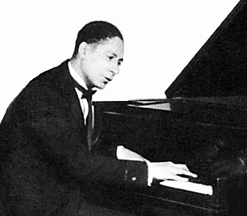 JELLY ROLL MORTON
: Legendary New Orleans Pianist.
JELLY ROLL MORTON
: Legendary New Orleans Pianist. 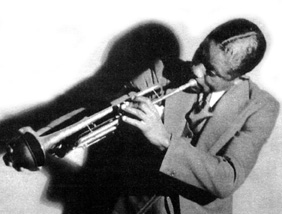 JAMES "BUBBER" MILEY : King of the Plunger Mute.
JAMES "BUBBER" MILEY : King of the Plunger Mute.